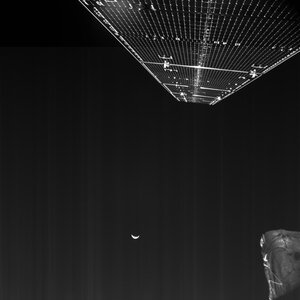Accept all cookies Accept only essential cookies See our Cookie Notice

About ESA
The European Space Agency (ESA) is Europe’s gateway to space. Its mission is to shape the development of Europe’s space capability and ensure that investment in space continues to deliver benefits to the citizens of Europe and the world.
Highlights
ESA - United space in Europe
This is ESA ESA facts Member States & Cooperating States Funding Director General Top management For Member State Delegations European vision European Space Policy ESA & EU Space Councils Responsibility & Sustainability Annual Report Calendar of meetings Corporate newsEstablishments & sites
ESA Headquarters ESA ESTEC ESA ESOC ESA ESRIN ESA EAC ESA ESAC Europe's Spaceport ESA ESEC ESA ECSAT Brussels Office Washington OfficeWorking with ESA
Business with ESA ESA Commercialisation Gateway Law at ESA Careers Cyber resilience at ESA IT at ESA Newsroom Partnerships Merchandising Licence Education Open Space Innovation Platform Integrity and Reporting Administrative Tribunal Health and SafetyMore about ESA
History ESA Historical Archives Exhibitions Publications Art & Culture ESA Merchandise Kids Diversity ESA Brand Centre ESA ChampionsLatest
Space in Member States
Find out more about space activities in our 23 Member States, and understand how ESA works together with their national agencies, institutions and organisations.
Science & Exploration
Exploring our Solar System and unlocking the secrets of the Universe
Go to topicAstronauts
Missions
Juice Euclid Webb Solar Orbiter BepiColombo Gaia ExoMars Cheops Exoplanet missions More missionsActivities
International Space Station Orion service module Gateway Concordia Caves & Pangaea BenefitsLatest
Space Safety
Protecting life and infrastructure on Earth and in orbit
Go to topicAsteroids
Asteroids and Planetary Defence Asteroid danger explained Flyeye telescope: asteroid detection Hera mission: asteroid deflection Near-Earth Object Coordination CentreSpace junk
About space debris Space debris by the numbers Space Environment Report In space refuelling, refurbishing and removingSafety from space
Clean Space ecodesign Zero Debris Technologies Space for Earth Supporting Sustainable DevelopmentLatest
Applications
Using space to benefit citizens and meet future challenges on Earth
Go to topicObserving the Earth
Observing the Earth Future EO Copernicus Meteorology Space for our climate Satellite missionsCommercialisation
ESA Commercialisation Gateway Open Space Innovation Platform Business Incubation ESA Space SolutionsLatest
Enabling & Support
Making space accessible and developing the technologies for the future
Go to topicBuilding missions
Space Engineering and Technology Test centre Laboratories Concurrent Design Facility Preparing for the future Shaping the Future Discovery and Preparation Advanced Concepts TeamSpace transportation
Space Transportation Ariane Vega Space Rider Future space transportation Boost! Europe's Spaceport Launches from Europe's Spaceport from 2012Latest

BepiColombo’s final glimpses of Earth after flyby
Thank you for liking
You have already liked this page, you can only like it once!
A view of Earth captured by one of the MCAM selfie cameras on board of the European-Japanese Mercury mission BepiColombo, as the spacecraft moved away from our planet after the gravity-assist flyby performed in the early hours of 10 April 2020.
The image, showing Earth as a receding crescent against the darkness of space, was captured at 23:00 UTC on 10 April, around 307 500 km from Earth’s surface, by one of the MCAM selfie cameras mounted on the Mercury Transfer Module (MTM), one of the three components of the BepiColombo mission. One of the solar arrays is visible on the right side of the images, and the structure in the bottom corner is one of the sun sensor units on the MTM, covered in multi-layered insulation.
Launched into an orbit around the Sun in October 2018, BepiColombo returned to Earth to take advantage of its gravity to steer its trajectory deeper into the inner Solar System. The spacecraft was visible during the manoeuvre to astronomers, including amateurs, equipped with small telescopes and located south of Rome and Madrid. The Earth flyby was the first of nine gravity-assist manoeuvres that will help BepiColombo to gradually home in on its target orbit around the smallest and innermost planet of the Solar System.
Travelling towards the Sun, BepiColombo has to constantly brake against the star’s powerful gravitational pull in order to be able to stop at Mercury. Comprising of the ESA-owned Mercury Planetary Orbiter, the Mercury Magnetospheric Orbiter of the Japan Aerospace Exploration Agency, and the ESA-built Mercury Transfer Module, the spacecraft will perform next two gravity-assist manoeuvres at Venus and further six at Mercury before commencing its science operations in early 2026.
-
CREDIT
ESA/BepiColombo/MTM -
LICENCE
CC BY-SA 3.0 IGO or ESA Standard Licence
(content can be used under either licence)

BepiColombo’s final glimpses of Earth after flyby

BepiColombo’s final glimpses of Earth after flyby

BepiColombo’s final glimpses of Earth after flyby

BepiColombo’s final glimpses of Earth after flyby















 Germany
Germany
 Austria
Austria
 Belgium
Belgium
 Denmark
Denmark
 Spain
Spain
 Estonia
Estonia
 Finland
Finland
 France
France
 Greece
Greece
 Hungary
Hungary
 Ireland
Ireland
 Italy
Italy
 Luxembourg
Luxembourg
 Norway
Norway
 The Netherlands
The Netherlands
 Poland
Poland
 Portugal
Portugal
 Czechia
Czechia
 Romania
Romania
 United Kingdom
United Kingdom
 Slovenia
Slovenia
 Sweden
Sweden
 Switzerland
Switzerland


























